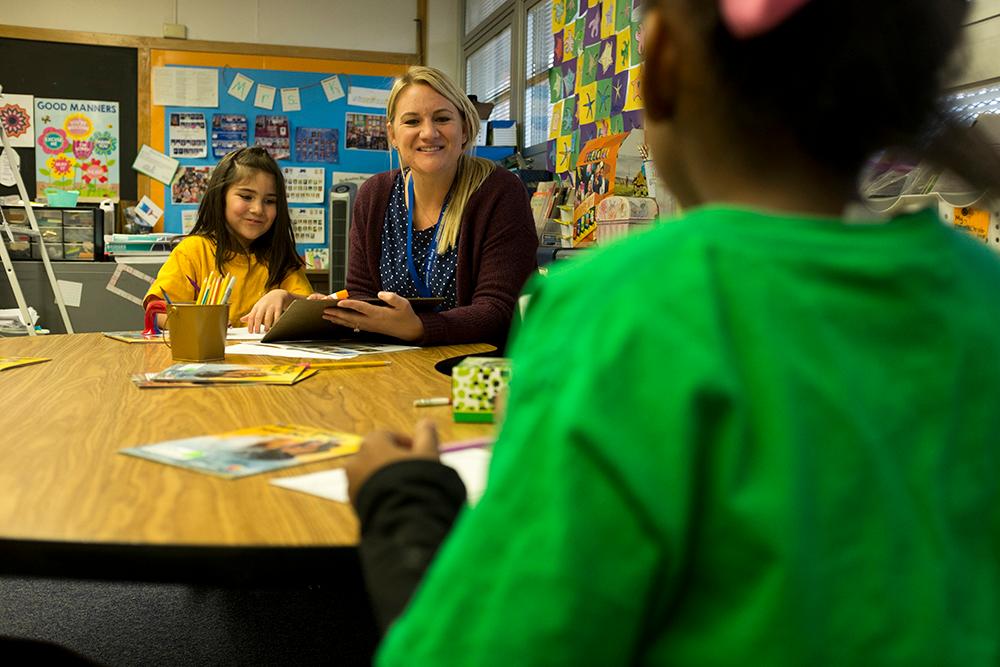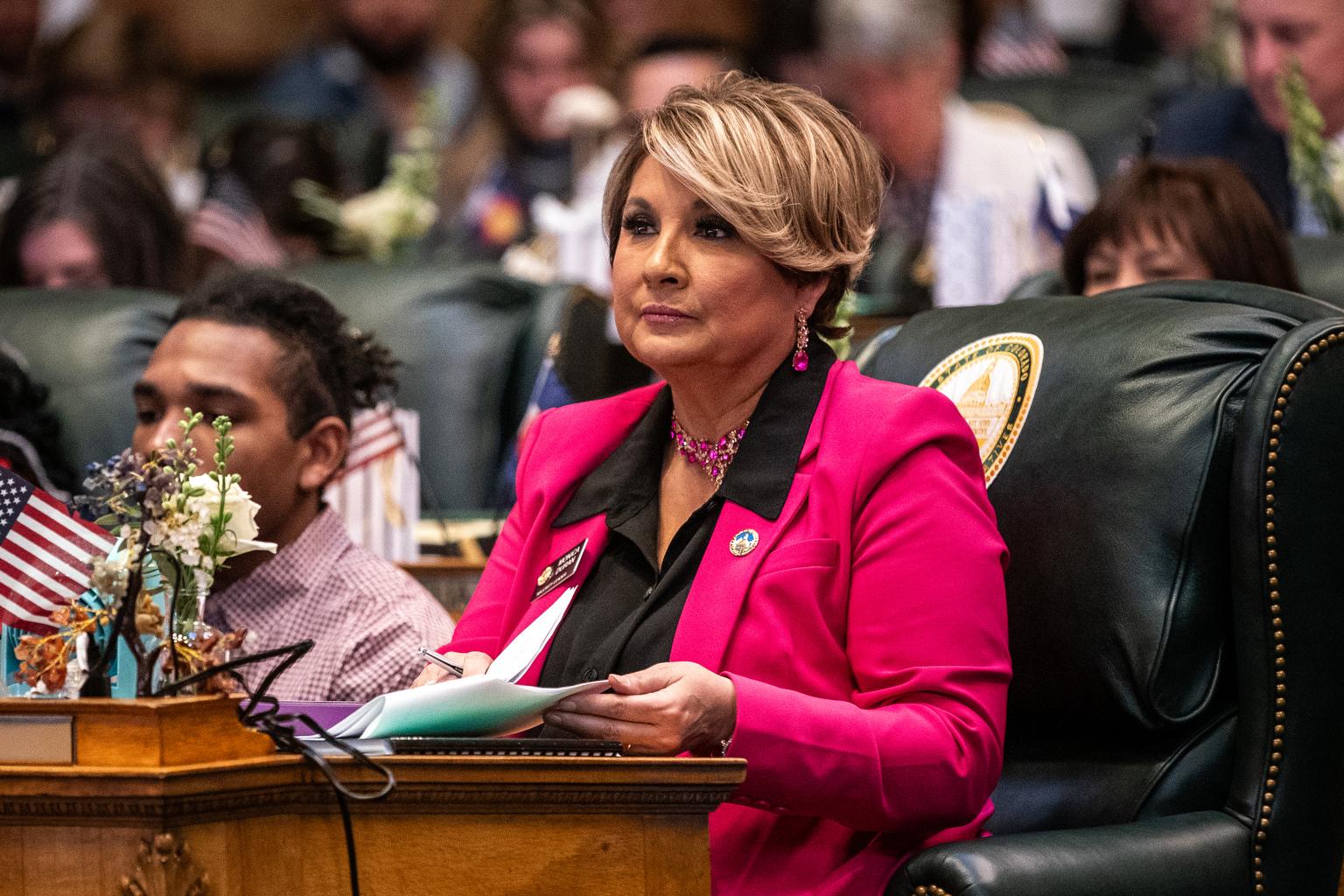
The number of Colorado children who struggle significantly with reading has declined for the third year in a row, but it’s still not back to pre-pandemic levels, according to an independent evaluation presented to the state board of education Wednesday.
About one in five students in the state struggle with a significant reading deficiency.
It’s the fourth year of an independent evaluation of Colorado’s READ Act, a 2012 law meant to identify struggling readers and give them the support they need to read on grade level by third grade. The law was amended in 2019 to add the mandatory third-party evaluation of the law’s implementation.
Independent evaluator West Ed concludes that the use of evidence-based strategies, required training for teachers and state literacy grants drove improved outcomes. Colorado now outpaces the national level for moving students from below to above grade level by more than 10 percent.
The state, which spends roughly $40 million to boost reading skills each year, still has a long way to go. Officials have a strategic goal to increase the percentage of third graders reading on grade level from 42 percent in 2024 to 60 percent in 2028.
“We have made some progress and there is still significant work in front of us,” said Rhonda Haniford, deputy commissioner of education at the Colorado Department of Education.
It’s the first year all components of the READ Act are in place
All of the state’s early elementary school teachers – more than 25,000 — administrators, principals and reading coaches have completed the required 45 hours of training. Most said the training was important to shaping their reading strategies.
More than 80 percent of the state’s educator training programs now use a curriculum aligned to the “science of reading,” an approach based on decades of research and evidence. Of those, 30 percent received conditional reauthorization because their reading courses didn’t meet the reading standards. More than half of those have addressed their deficiencies.
The report showed that 98 percent of school districts are using high-quality instructional materials, up from 40 percent in 2019. About two-thirds of districts have guidance on how much time schools should be spending on teaching foundational skills such as phonics and vocabulary. The rest don’t.
Some grades are doing better than others
About 19.8 percent of Colorado students had a significant reading deficiency last year. That compares to 16.3 percent in 2018-19. While students in grades three, five, six, and seven show similar achievement in reading and writing to 2019, students in grades four to eight remain significantly below pre-pandemic performance. Fourth graders are 6 points behind and eighth graders are 4 points behind.
Despite fourth graders' struggles, they still have the fifth-highest reading score in the nation on the national tests known as NAEP. Overall, more third-grade students are scoring at grade level in reading and writing than before the pandemic.
Some student groups are doing better than others
Certain student groups were more likely to have a significant reading deficiency: English language learners, low-income students, students with special needs, and students of color. The number of Black students scoring on grade level on reading fell 2.6 points last year. Students who were chronically absent or who changed schools frequently also struggled.
About five percent of students who at any point have been identified with a reading deficiency are on target by third grade, up from four percent, prompting evaluators to question whether that time frame is realistic. However, among students who exit the significant reading deficiency category, thirteen percent are on grade level by third grade.
Evaluators highlighted two bright spots: Deer Creek Elementary School, a rural school that received an early literacy grant, increased the number of third grade students scoring on grade level from 39 percent to 46 percent. Another rural school, Platteville Elementary School in Weld County, jumped from 35 to 49 percent.
Teachers — and parents — say they need more help
The majority of teachers reported daily instruction in phonemic awareness, phonics, fluency, vocabulary and comprehension. But teachers reported that they don’t have enough training to support English language learners. There is also continued confusion around identifying students with significant learning deficiencies and how to help students with multiple needs read on grade level.
In surveys, parents also expressed frustration over the process of identifying their student with a reading deficiency as well as specific interventions. A third of parents who expressed frustration said their child was not receiving adequate reading support.
“More information needs to be given to parents regarding the resources available and specific interventions done at the school when their child is on a READ plan,” said West Ed evaluator Katie Grogan.
Students with dyslexia
Parents groups have lobbied for years to correct the deficiencies in teaching children with dyslexia. The state is slowly inching forward. The state board has approved additional measures that screen for dyslexia but they are still optional for districts. A working group continues to lobby for training on instructing students with disabilities, students identified as having dyslexia and multilingual learners. Commissioner of Education Susana Cordova said her department has submitted a budget request for a second level of training for some teachers, tapping unused READ Act dollars.
“We are certainly seeing in our data underperformance in those groups and we're hearing from educators the need for more training,” she said.
Recommendations
West Ed said school districts should prioritize READ Act funds and support for schools with the highest populations of underserved students. They called for more support for teachers around helping students with multiple needs such as English language learners with disabilities. They recommend requiring school staff and leaders to be involved in writing early literacy grant applications and promoting regular meetings to cultivate buy-in.
They also recommended studying how well schools are implementing evidence-based curricula and examining test data throughout the year instead of looking at just one standardized test.









